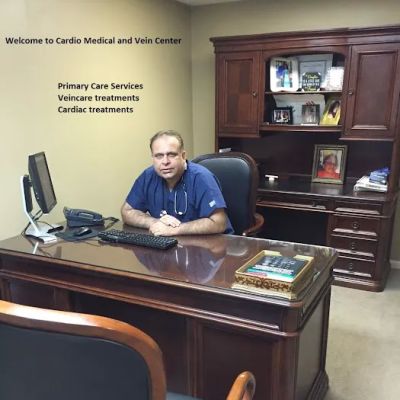Understanding Heart Disease in Children: What Every Parent Should Know
- 1. What Is Heart Disease in Children?
- 2. What Causes Heart Disease in Children?
- 3. Symptoms of Heart Disease in Children
- 4. How is Heart Disease Diagnosed in Children?
- 5. Treatment and Care for Children with Heart Disease
- 6. Can Heart Disease in Children Be Prevented?
1. What Is Heart Disease in Children?
Heart disease in children is not as common as it is in adults, but it is a serious condition that can have long-lasting effects on a child's health. When we think of heart disease, we typically imagine conditions like heart attacks or strokes, but in children, heart disease often manifests differently. It may be present from birth (congenital heart disease) or develop later (acquired heart disease).
Congenital heart disease refers to heart defects that are present at birth. These defects may affect the heart's structure, such as holes in the heart or problems with the heart valves. On the other hand, acquired heart disease in children may develop as a result of other health conditions, such as infections or conditions like Kawasaki disease. As a parent, understanding these conditions and being aware of their symptoms can help in identifying potential issues early.

2. What Causes Heart Disease in Children?
The causes of heart disease in children can be divided into two main categories: congenital (present at birth) and acquired. Let’s explore both in detail:
Deborah Heart and Lung Center
deborah heart and lung center
200 Trenton Rd, Browns Mills, NJ 08015, USA

2.1 Congenital Heart Disease
Congenital heart disease is the most common type of heart disease in children. It occurs when there is an issue with the structure of the heart, such as a defect in the walls that separate the chambers or the valves that control blood flow. These defects can occur for several reasons, including genetic factors, maternal health during pregnancy, or environmental factors such as certain infections during pregnancy.
2.2 Acquired Heart Disease
Acquired heart disease in children typically develops after birth and may be caused by various factors. Infections such as viral infections or bacterial endocarditis can lead to heart disease in children. Other conditions, like Kawasaki disease or arrhythmias, can also contribute to acquired heart disease. Kawasaki disease, for example, is a condition that causes inflammation in the blood vessels and can lead to heart problems if not treated properly.
3. Symptoms of Heart Disease in Children
Heart disease in children may not always be immediately apparent, especially in mild cases. However, there are several symptoms that parents should watch for, especially if the child has risk factors or a known family history of heart disease. Recognizing these symptoms early can help ensure that the child gets the right treatment. Here are some common signs:
3.1 Cyanosis
Cyanosis is a bluish tint to the skin, lips, or nails, which indicates that the body is not getting enough oxygen. This can occur when a child’s heart is not pumping blood efficiently. If you notice this symptom, it’s important to seek medical attention immediately.
3.2 Fatigue and Weakness
Children with heart disease may experience unexplained fatigue or weakness, particularly during physical activities. They may seem tired all the time, and their energy levels may drop significantly compared to their peers. This is often a sign that the heart isn’t pumping blood efficiently to meet the body’s needs.
3.3 Difficulty Feeding
Infants with congenital heart disease may have difficulty feeding or fail to gain weight. This is especially true if they are not getting enough oxygen or blood flow to their vital organs during feeding.
3.4 Rapid Breathing and Sweating
Rapid breathing or excessive sweating, especially during simple activities, can also be signs of heart disease in children. This can be indicative of the heart’s inability to circulate blood and oxygen properly throughout the body.
4. How is Heart Disease Diagnosed in Children?
If heart disease is suspected in a child, doctors will use a variety of diagnostic tools to confirm the diagnosis. The first step typically involves a thorough physical examination and a discussion of the child’s medical history. If further investigation is needed, the following diagnostic methods may be used:
4.1 Echocardiogram
An echocardiogram is an ultrasound of the heart and is often the first test used to check for heart defects or abnormalities. It provides a detailed image of the heart’s structure and function and can help diagnose congenital heart disease.
4.2 Electrocardiogram (ECG)
An ECG measures the electrical activity of the heart. It can detect arrhythmias (irregular heartbeats) and other electrical issues with the heart, which might indicate heart disease.
4.3 Chest X-ray
A chest X-ray can provide images of the heart and lungs, helping doctors to detect any signs of heart enlargement, fluid buildup, or other issues that may be indicative of heart disease.
5. Treatment and Care for Children with Heart Disease
Treatment for heart disease in children depends on the type and severity of the condition. In some cases, medications can help manage symptoms, while others may require surgery or other interventions. Here are some common treatment options:
5.1 Medications
Medications are often used to help manage heart disease in children, particularly when the issue is related to high blood pressure, arrhythmias, or heart failure. Diuretics may be prescribed to help remove excess fluid from the body, while beta-blockers can help control heart rate and improve heart function.
5.2 Surgery or Catheter Procedures
In more severe cases of congenital heart disease, surgery may be necessary to correct structural problems in the heart. For example, a child with a heart valve defect may need surgery to repair or replace the valve. In some cases, less invasive procedures, such as catheter-based interventions, can be used to close holes in the heart or widen narrowed arteries.
5.3 Ongoing Care and Monitoring
For children with heart disease, ongoing monitoring and care are essential to ensure that the condition doesn’t worsen over time. Regular follow-up appointments with a pediatric cardiologist will help track the child’s heart health and make any necessary adjustments to the treatment plan.
6. Can Heart Disease in Children Be Prevented?
While congenital heart disease cannot be prevented, there are steps parents can take to reduce the risk of acquired heart disease in children. A healthy lifestyle plays a major role in promoting heart health. Encouraging healthy eating habits, regular exercise, and avoiding smoking around children can help reduce their risk of developing heart disease later in life.
6.1 Healthy Diet and Exercise
Encouraging children to eat a balanced diet full of fruits, vegetables, whole grains, and lean proteins, while limiting processed foods and sugary drinks, can help promote overall heart health. Regular physical activity is also crucial for developing strong, healthy hearts and preventing future heart problems.
6.2 Regular Health Checkups
Regular checkups with a pediatrician can help monitor a child’s heart health. Early detection of high blood pressure, cholesterol issues, or other risk factors can significantly reduce the chances of heart disease developing later in life. By being proactive, parents can ensure their children stay healthy and active.
Understanding heart disease in children can be overwhelming, but with the right knowledge and early intervention, children can lead healthy, active lives. Whether you’re concerned about your child’s health or just want to learn more about prevention, taking the steps to understand and manage heart disease in children is the first step toward ensuring a bright and healthy future for your family.





















Hoag Urgent Care Irvine - Sand Canyon
hoag urgent care
16205 Sand Canyon Ave Suite 100, Irvine, CA 92618, USA